Connecting Arduino to ARC
Connecting to ARC
On the previous step, we programmed the Arduino to become an EZ-B. Now that the code is running on the chip, we can begin using it with ARC.
Load ARC and press the CONFIG button on the connection control
Press the SETTINGS tab and select the BAUD RATE for the EZB Index that will be your Arduino. If you're connecting to multiple devices (i.e. EZ-B v4, IoTiny and Arduino), you will want to have each device on a different connection index. I'm using connection index 0 (zero) in my example. Change the BAUD RATE for the connection index that you wish to use. The BAUD RATE was specified in the previous step. By default, most of the EZ-Arduino firmwares will be 57600 baud.
Press SAVE
Click on the ADDRESS input of the device index that you configured for the Arduino. In my example, I'm using index 0 (zero). The ADDRESS will display a number of detected addresses and devices, including a COMx port, which is the Arduino. Select the COMx port. My Arduino is on COM6.
Now press the CONNECT button and ARC will connect to the Arduino. The capabilities of the particular Arduino device are detected by ARC and displayed in the debug window. In the example below, I added a debug window to demonstrate the connection log.
Notice the capabilities detected by the Firmware used on this Arduino. There are a number of capabilities listed, but there's a larger number of capabilities missing. For example, there is no Video or Audio support. Consult the capability list of the firmware so you understand what features may be missing before using. If a feature is missing from the firmware, ARC will notify you when attempting to use the capability.
You may now begin using your Arduino with ARC. The port numbers align with the ports of the Arduino. Based on the Arduino hardware version, you may be limited to ports. For example, the Arduino UNO has 14 digital ports and only 2-13 are usable. This is because 0 and 1 are used for the USB. If you select a port higher than 13 in ARC, nothing will happen on the Arduino because there's no port. The same applies to Analog ports, as the UNO only has 6 ADC ports.
The Arduino Mega, however, has enough ports to satisfy ARC’s port selection dialog.
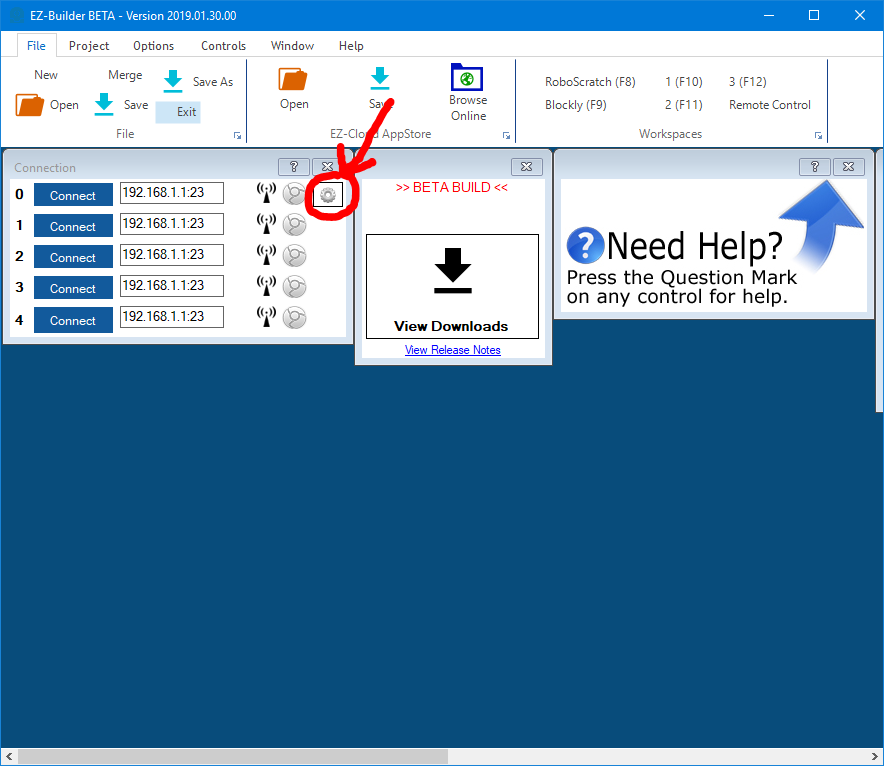
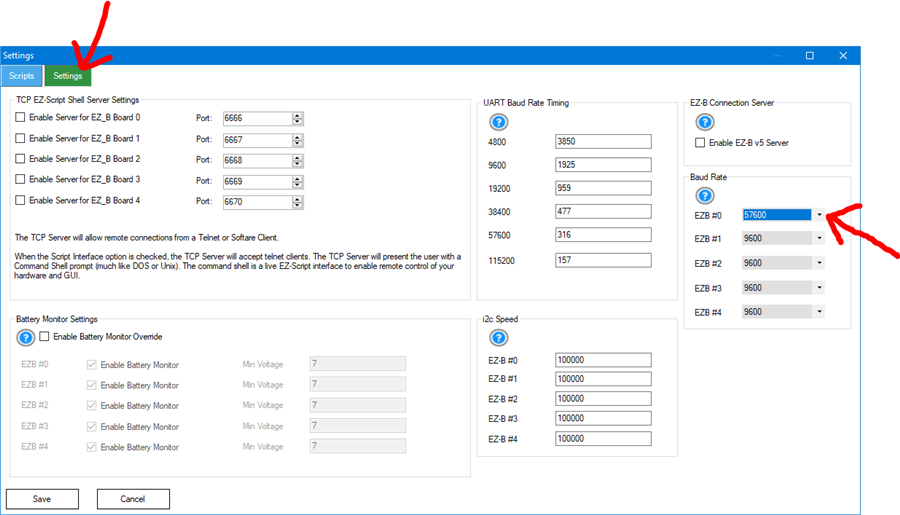
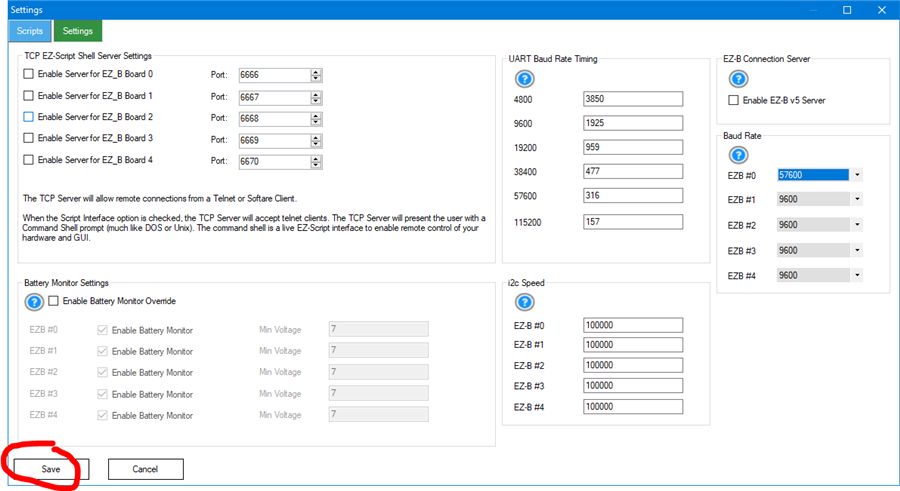

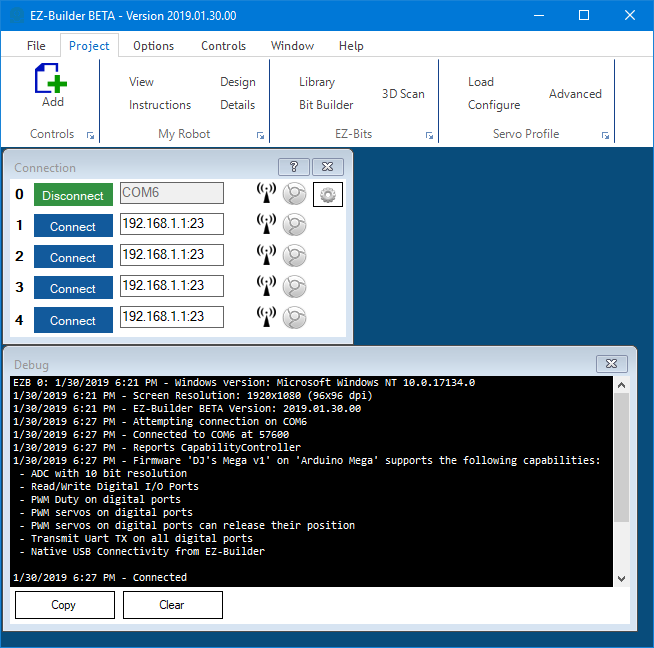

You can configure most bluetooth modules for a higher baud rate. Check the manual for the bluetooth module. They usually use an AT command set
Tiny question, will there be an option at some point to write a sketch for the arduino and load it using tools in ARC so that a arduino could function untethered from a PC for low level tasks?
Second Question: any plans on integrating the Raspberry PI 3b plus and pi zero W into this, since it has pretty much everything built in you could need ( kinda sorta)
You can use the Arduino IDE to program arduino chips. It would be a lot of duplicated effort to create an arduino editor in ARC.
We explored raspberry pi options and while that question doesn’t align with this tutorial, the answer is yes we’re working on a design - but it’ll take some time to ensure there’s no sacrifice of features for cross platform compatibility
Is the ESP8266 or ESP32 going to be considered in the future? I ask because it is WiFi enabled, very cheap and can be programmed with the Arduino IDE.
I can certainly take a look at it. The only challenge will be their tcp network driver won’t keep up with the protocol requirements. We had to design our own for the use-case. Also, it’ll end up with the same number of ports as the IoTiny but no audio or video. So what’s the advantage?
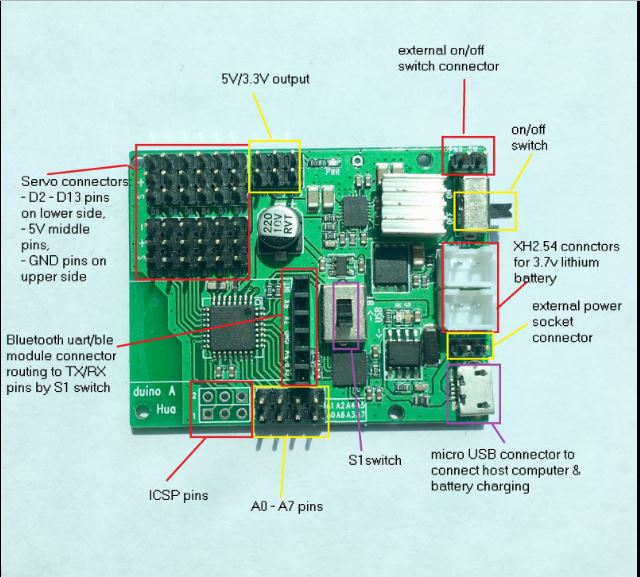
I think you should have a look at the [color=#333333][font="Helvetica neue", Helvetica, Verdana, sans-serif]HuaDuino - Featuring Lithium Battery Power-up and Charging. this board has 12 servo connections. [color=#000000][font=Arial]HuaDuino is Arduino Nano compatible [/font][/color]That board appears to be uno compatible for pinouts. It’ll work with my uno firmware. Get it from here: https://synthiam.com/Hardware/Hardware/Arduino-Genuino-Uno-17527
Thanks DJ for your quick reply. any recommendations for a bluetooth module that would go with this board and work well with ARC.